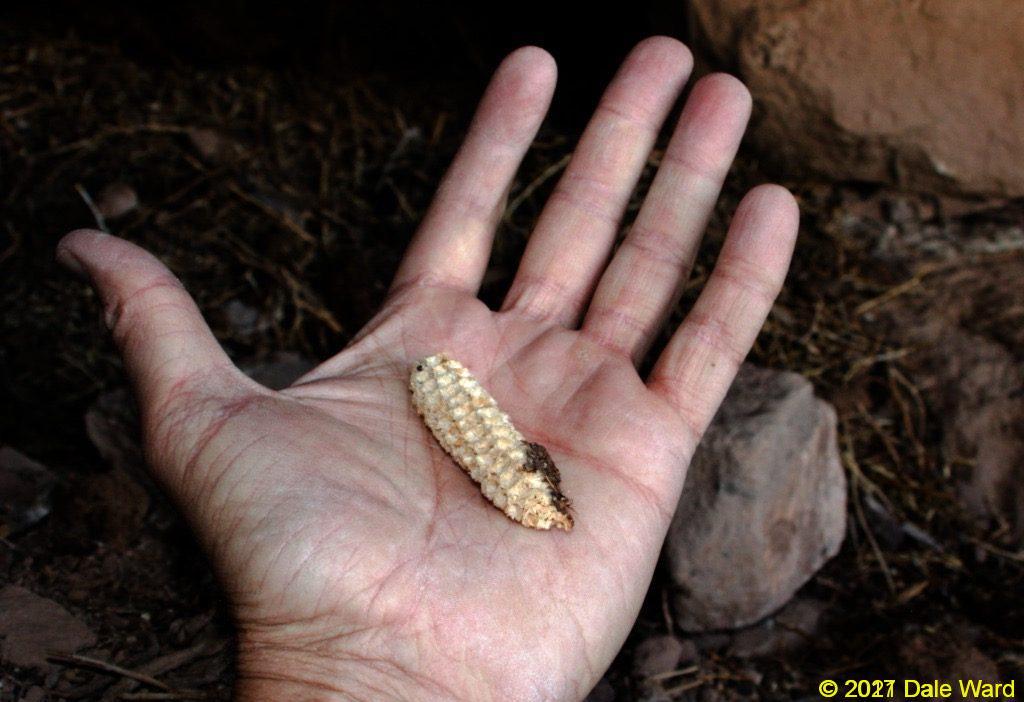Signs of Life
Stumbling upon a connection to the past while hiking in Southwestern Colorado
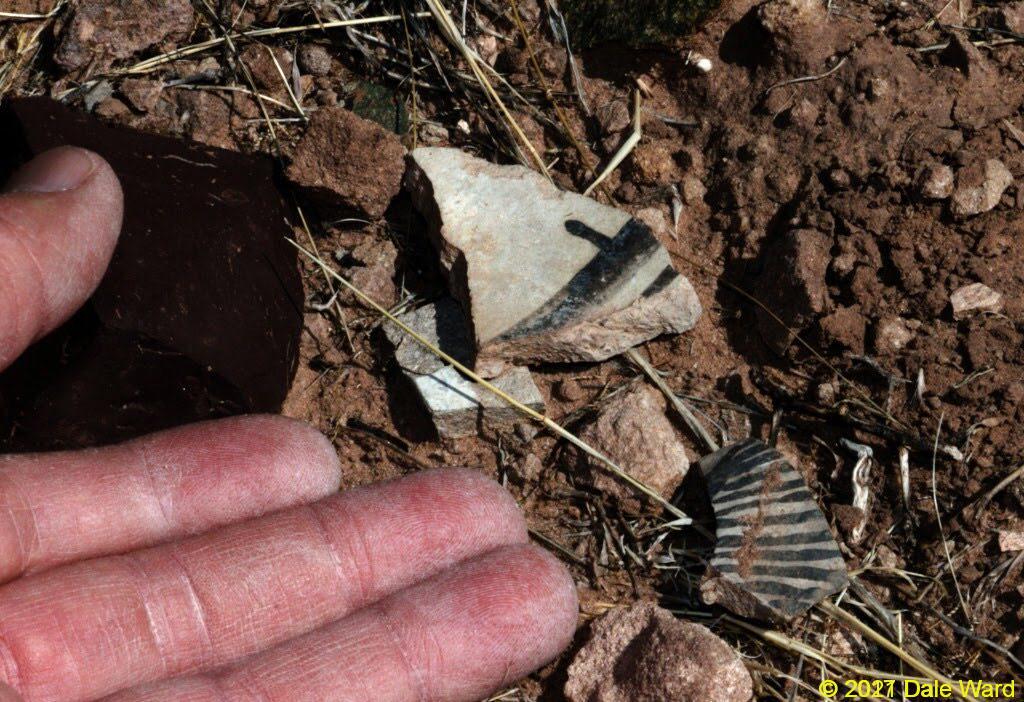 Potsherds scattered on the ground near the ruins
Potsherds scattered on the ground near the ruins
A couple of months ago, I was following mustang tracks along Yellow Jacket Creek in the Canyons of the Ancients. This was a pleasant hike for the first couple of hours, but the day grew hotter and hotter, the brush grew more and more dense, and I started to get tired. I don’t know how the horses had been able to force their way through this dense, thorny vegetation.
I decided to call it a day, and hiked up out of the creek bottom and onto an open, sandy bench above the creek, where the walking was easier. I figured that I’d hike back to the truck this way, rather than backtracking through the brush of the creek.
As I made my way back, I eventually came to a big sandy flat above the creek. The ground was covered with horse tracks and stud piles. It looked like the Mustangs had the same idea as me.
In the middle of the clearing was a large pile of boulders, connected to the surrounding cliffs by a short ridge.
And underneath one of the boulders was a stone ruin. Well, gosh. I wonder what else is up there.
I saw potsherds all over the ground around the base of boulder pile. Some of the potsherds were covered in black and white geometric designs, others were corrugated clay.
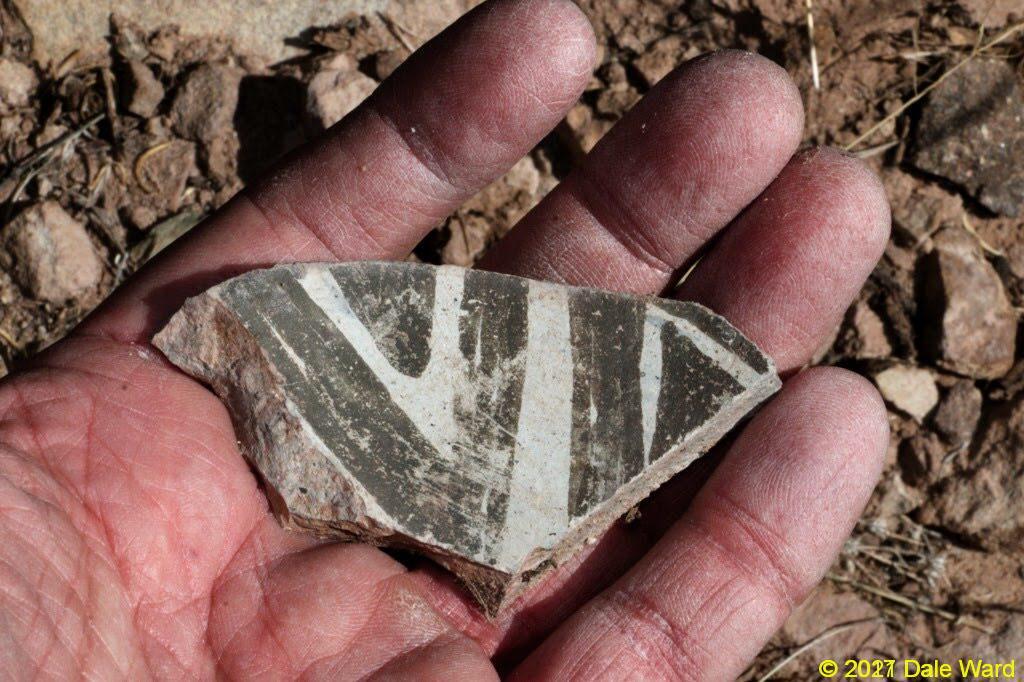 Potsherds from the ground around the ruins
Potsherds from the ground around the ruins
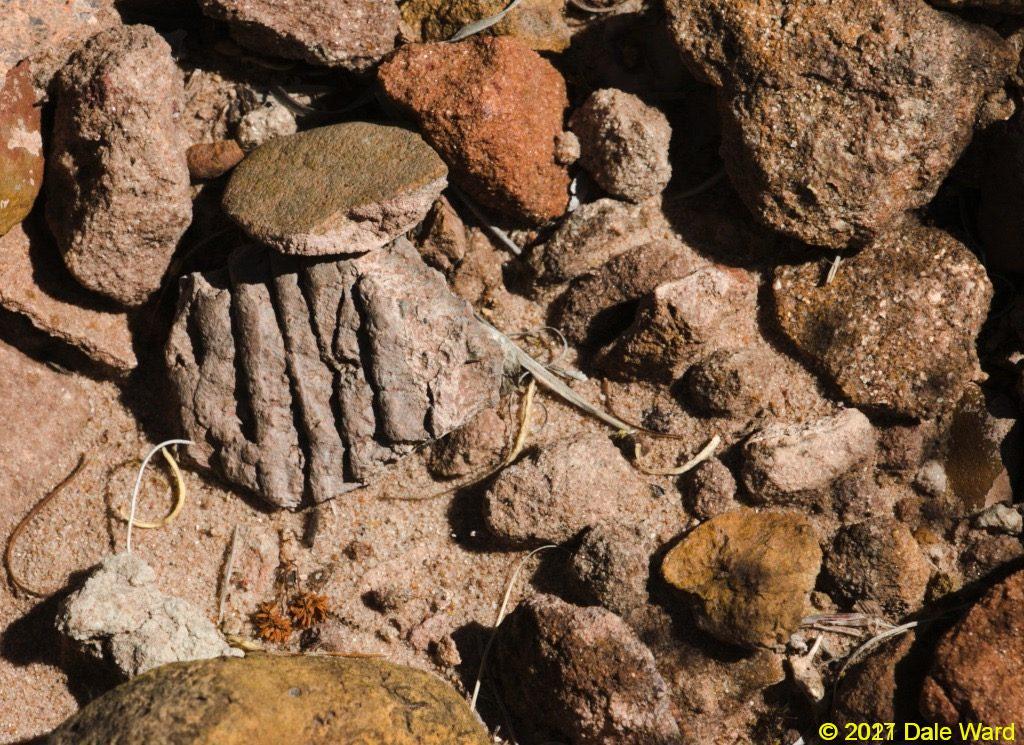 Corrugated potsherd from the ground around the ruins
Corrugated potsherd from the ground around the ruins
I climbed up the boulder pile. There were a lot of buildings here at one time. Most of them were just rubble now.
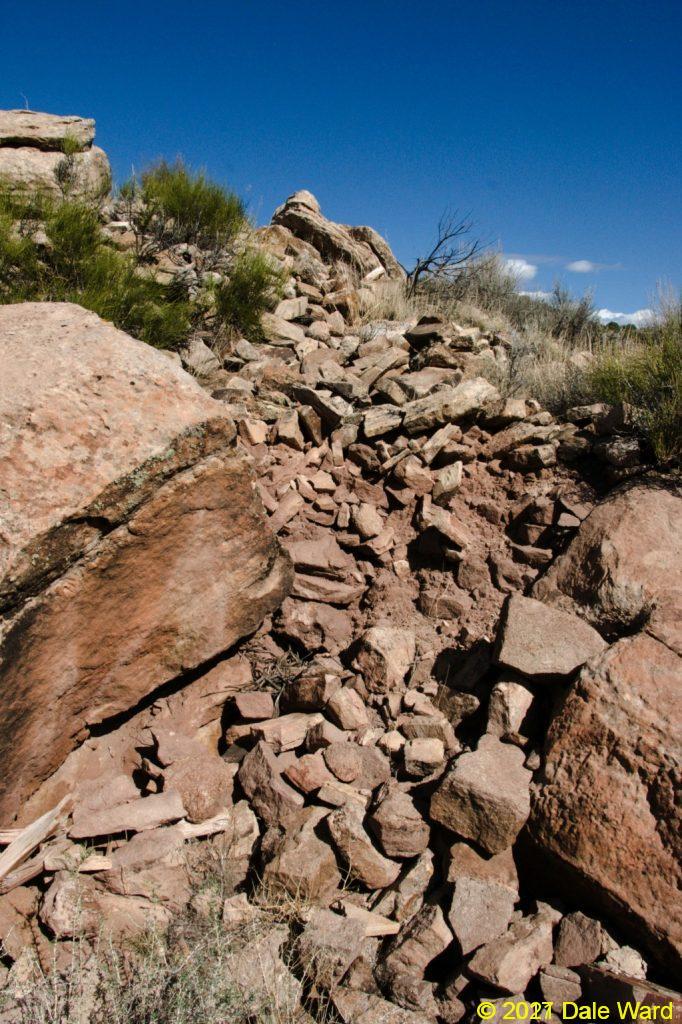 Rubble pile surrounding the boulders, from collapsed structures
Rubble pile surrounding the boulders, from collapsed structures
The ruin I’d seen initially, the one that was underneath the overhanging ledge of the largest boulder, was the most intact ruin remaining. There was a gap, a crevice, between the ruin and the ‘path’ up to the ruins. I hopped across.
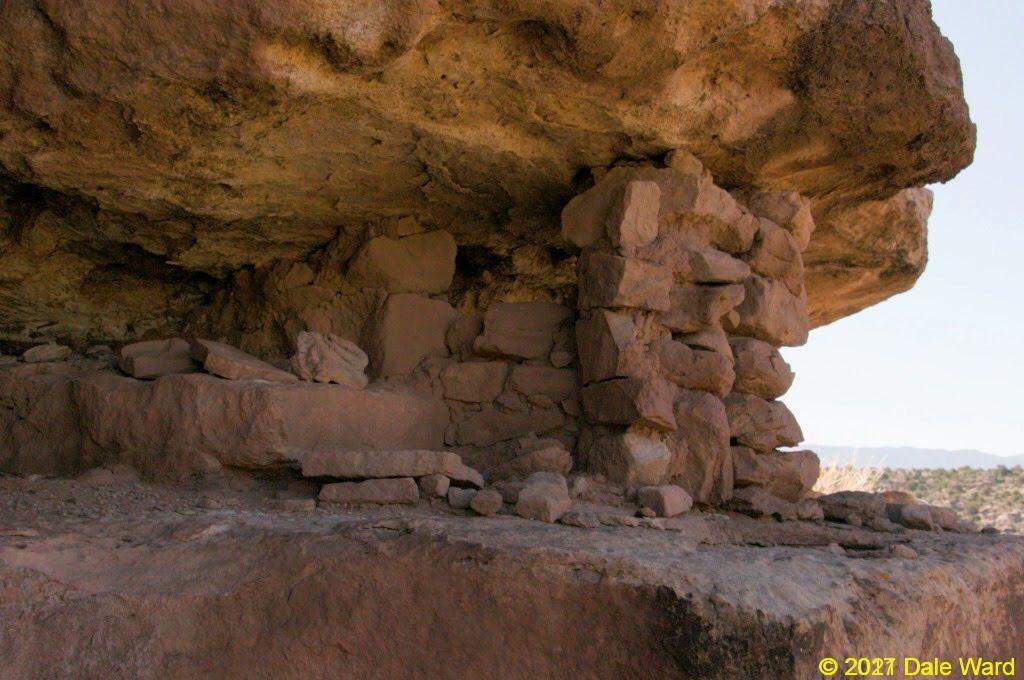 Looking at the ruin under the boulder ledge
Looking at the ruin under the boulder ledge
Even this ruin was not very intact, it was just a couple of partial walls, a door, and a window. It was a nice, comfortable ledge, though, with a beautiful view of the creek, so I sat for a while and cooled off.
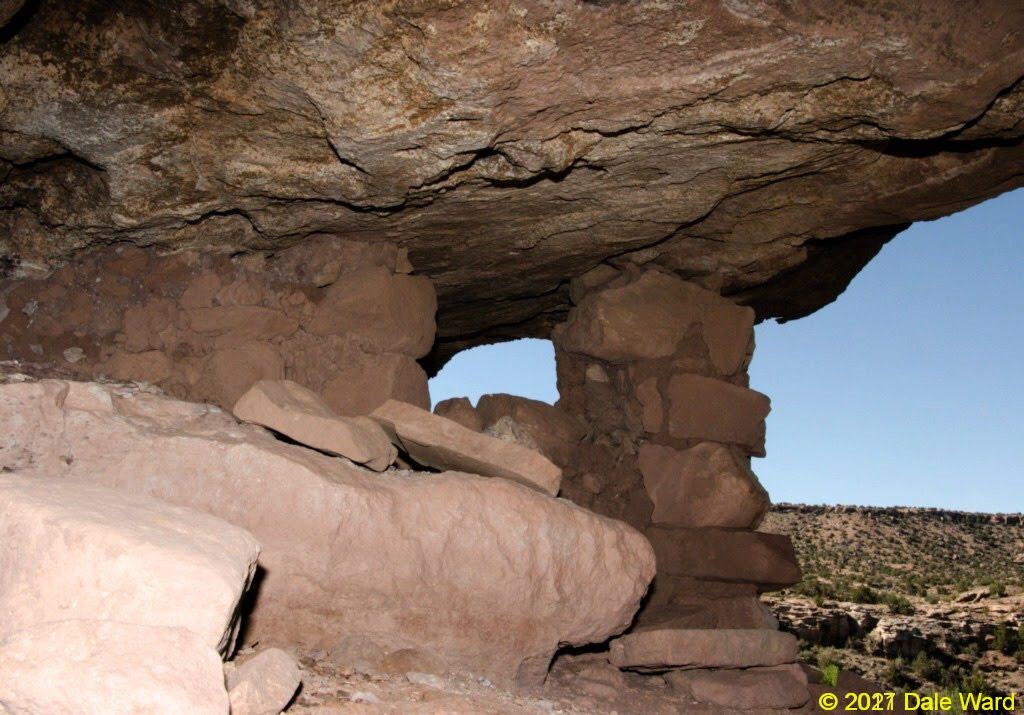 Looking through the ruin’s window, out towards Yellow Jack Creek
Looking through the ruin’s window, out towards Yellow Jack Creek
I looked down toward the creek. I imagined what it must have been like when these ruins were populated. I’ll bet they farmed down on the sandy bench above the creek. Or maybe down in the creek bottom itself.
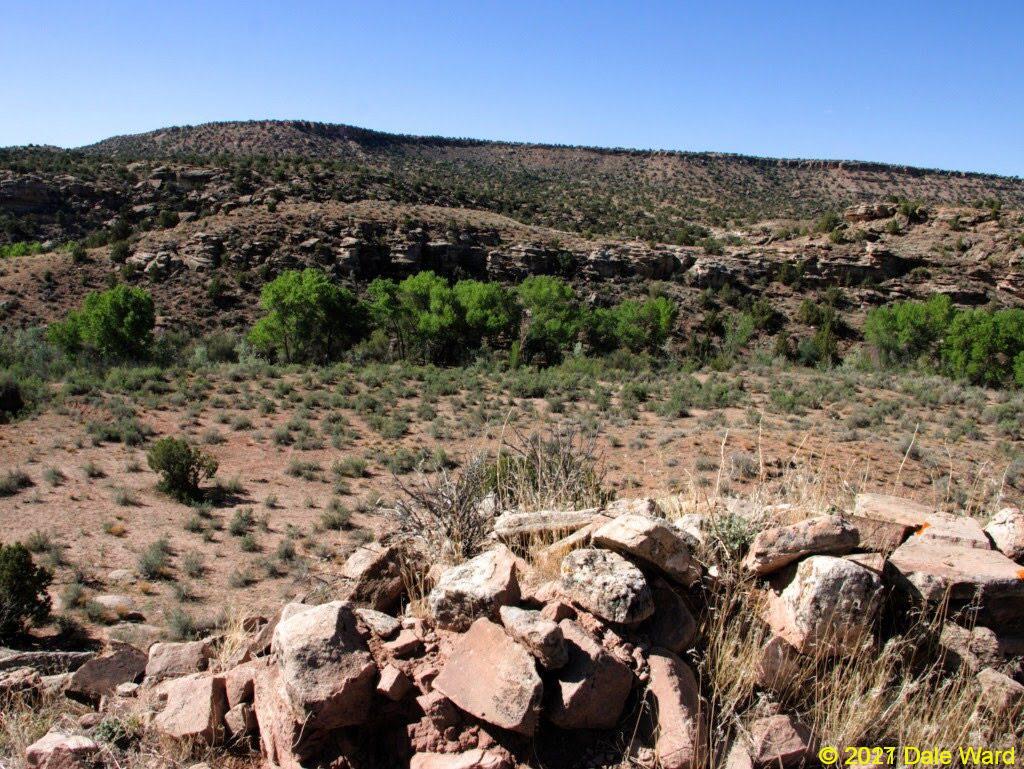 Yellow Jacket Creek, from the ruin ledge, looking out over the rubble of another fallen building
Yellow Jacket Creek, from the ruin ledge, looking out over the rubble of another fallen building
As I was climbing back down the boulders to the ground, I noticed a Pack Rat midden in a rock crevice. Pack Rats love to collect interesting things - cactus spines, shotgun shells, skulls, bones, feathers - all kinds of neat stuff makes its way into Pack Rat middens. It’s almost always worth giving them a once-over.
And this one had something pale on it…a rabbit skull, maybe? I reached into the crevice and picked it up.
Huh. It was a corn cob. A small one, maybe two or three inches long. All of the kernels had been picked off the cob, maybe by the Pack Rat.
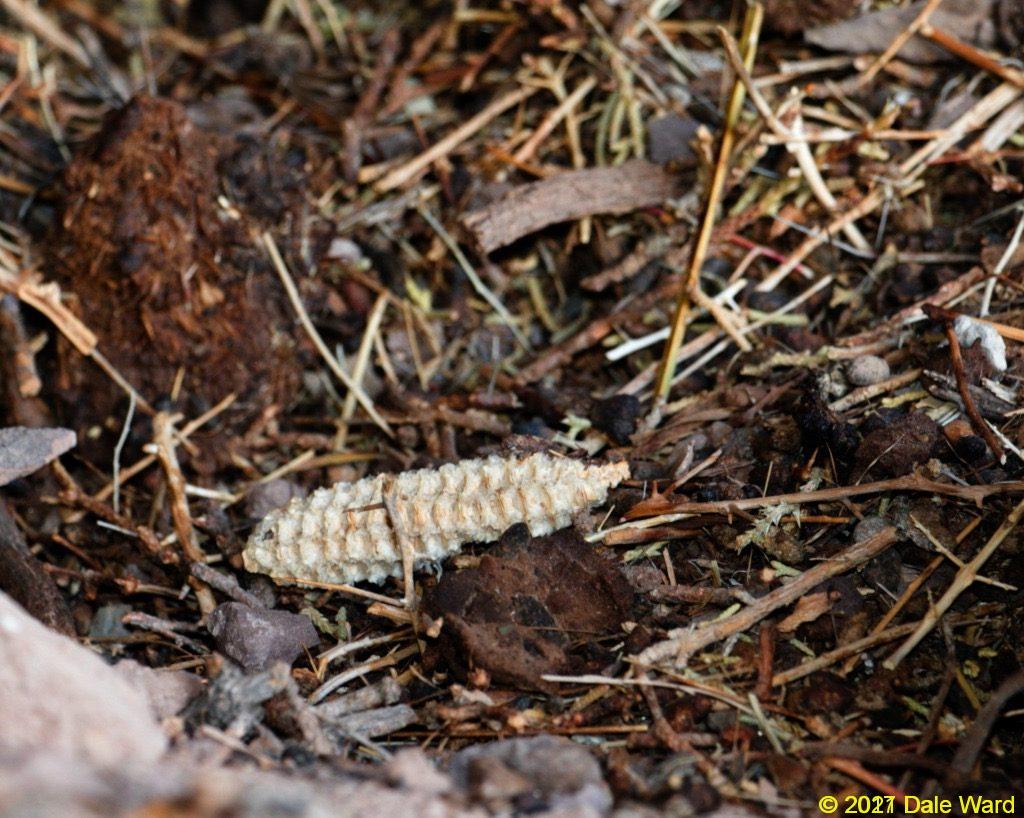 Anasazi corn on a Packrat midden
Anasazi corn on a Packrat midden
I’m thinking this was an old ear of corn that the Anasazi had farmed, maybe down on the flats below. It had been in a store house, an overlooked scrap. Then buried in rubble when the store house collapsed.
Later, the Pack Rat dug it up and put it on its midden. And then I found it.
It’s my understanding that most of these ruins were abandoned in the late 1200s. It that’s true, then this corn was grown about 700 years ago. This seemed incredible to me.
I put the corn cob back onto the Pack Rat midden and continued picking my way down to the flats below.
How very, very cool.
